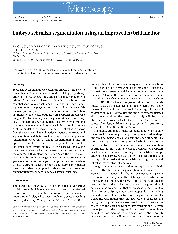摘要
Zebrafish is an invaluable vertebrate model in life science research and has been widely used in biological pathway analysis, molecular screening and disease modelling, among others. As a result, microscopic imaging has become an essential step in zebrafish phenotype analysis, and image segmentation thus plays an important role in the zebrafish microscopy analysis. Due to the nonuniform distribution of intensity and weak boundary in zebrafish microscope images, the traditionally used segmentation methods may lead to unsatisfactory result. Here, a novel hybrid method that integrates region and boundary information into active contour model is proposed to segment zebrafish embryos from the background, which performs better than traditional segmentation models. Meanwhile, how to utilize the gradient information effectively in image segmentation is still an open problem. In this paper, we propose to improve the aforementioned hybrid method in two aspects. Firstly, the mean grey value of background is estimated by the expectation maximization (EM) algorithm to constrain the active curve evolution. Secondly, an edge stopping function sensitive to gradient information is designed to stop curve evolution when the active curve reaches the embryo boundary. Experimental results show that the proposed methods can provide superior segmentation results compared to existing algorithms.
- 出版日期2013-4
- 单位南京大学
